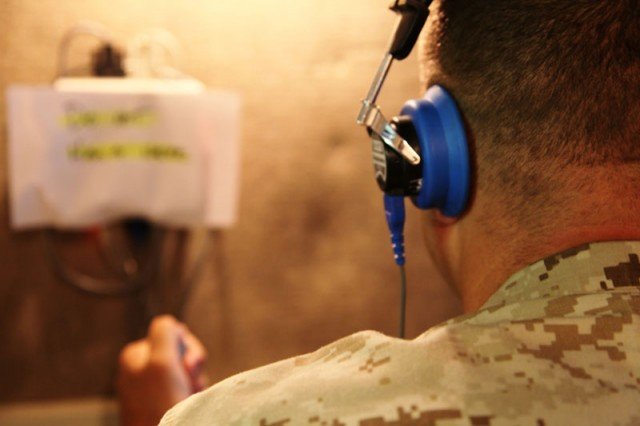
By Tom Helfer, Ph.D., Hearing Conservation Consultant, U.S. Army Public Health Command
There are a number of causes of hearing loss. Some of them involve temporary loss that can be treated with medication or surgery. Others are permanent and not treatable with medication or surgery but may be mitigated with amplification (hearing aids).
The most common type of hearing loss in the military is noise-induced hearing loss, or NIHL. NIHL is a permanent type referred to as sensorineural hearing loss (SNHL). SNHL is due to damage to microscopic nerve cells in the cochlea, the end organ of hearing. NIHL is painless, progressive, permanent and preventable.
Exposure to steady noise above damage criteria (85 decibels) over a period of years can lead to NIHL. Weapons fire is referred to as impulse noise. Exposure to impulse noise above damage criteria (140 peak decibels) can cause sudden permanent SNHL. This means that firing a few rounds on a range without hearing protection can cause permanent hearing loss.
By Army regulation, Soldiers are to be supplied with adequate hearing protection devices suitable for their operational environment. Soldiers also have freedom of choice as to the types of hearing protecting devices available to them at no charge.
Since September 2006, Soldiers are required to have annual hearing tests for the purpose of monitoring their hearing readiness and maintaining adequate hearing to perform their duties. These hearing tests also produce the outcomes metrics for monitoring progress in hearing loss prevention practice.
Since August 2013 the U.S. Army Public Health Command has posted active duty Army NIHL surveillance reports on their web page. The Active Duty Noise Induced Hearing Injury Reports contain detailed five year data trends and analysis along with a set of summary tables detailing NIHL rates for injury groups such as Army-wide rates compared to DOD, occupation groups, age, gender groups and Army installations grouped by region compared to total Army. The intent of these surveillance reports is to inform commanders and hearing loss prevention stakeholders of progress in preventing hearing loss. These reports can be accessed at http://phc.amedd.army.mil/whatsnew/Pages/PeriodicPublications.aspx.
To learn more about hearing loss, hearing protection and how annual hearing tests help to keep track of hearing loss rates, visit the Army Hearing Program web page at: http://phc.amedd.army.mil/topics/workplacehealth/hrc/Pages/RelatedSites.aspx and http://phc.amedd.army.mil/topics/workplacehealth/hrc/Pages/default.aspx
